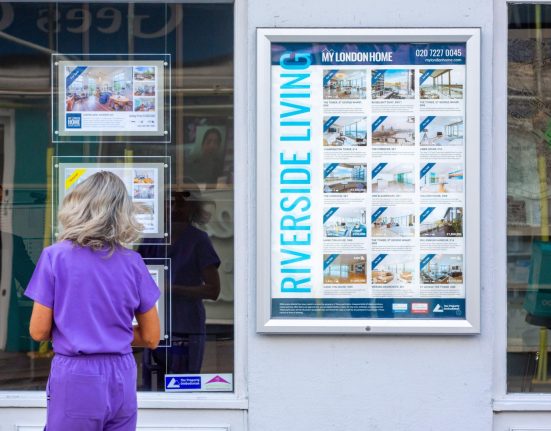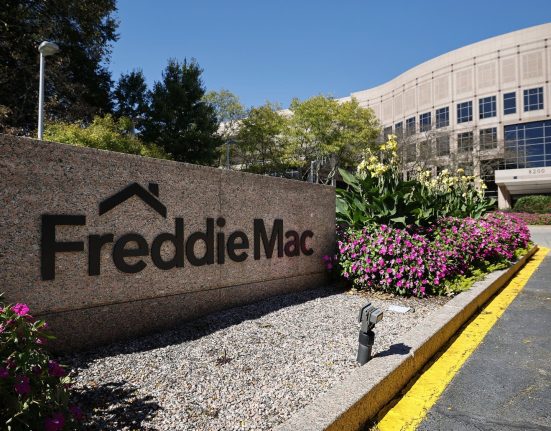Getting a mortgage could soon become easier – especially if you’re buying your first home. At the start of the year, the financial regulator announced plans to reform the market and improve access for borrowers.
We’re now starting to see the effects, with lenders tweaking the affordability checks they use to decide how much you can borrow.
Some are also launching new products aimed at first-time buyers. Skipton Building Society, for example, has introduced a delayed start mortgage that lets you delay repayments for the first three months after moving in.
Here, we break down what these changes mean for you and how to find best mortgage rate if you’re looking to get on the ladder.
How mortgage affordability checks are changing
Over the past two months, a number of lenders have updated the way they assess mortgage affordability.
When you apply for a mortgage, lenders carry out a ‘stress test’ to check whether you could afford repayments if interest rates were to rise. This often means testing whether you could afford monthly repayment rates of 8-9%, even if your actual deal is lower.
These high stress rates can make it harder for many buyers, especially first-time buyers, to borrow the amount they need.
For example, research by Zoopla found that a first-time buyer with monthly repayments of £1,020 at a 4.5% rate would typically need to show they could afford a £1,550 a month under a 8.5% stress test. If the stress rate is lowered to 6.5%, that figure falls to £1,275, which would make it easier to pass the checks.
- Find out more: best mortgage rates
Which lenders are reducing affordability rates?
Santander was the first major bank to reduce its mortgage affordability rates in late March, with all residential affordability rates reduced by up to 0.75% percentage points. The change means some buyers can now borrow between £10,000 and £35,000 more than they could previously.
Hodge has also lowered its affordability rates. It said that joint applicants with a household income of £45,000 could now borrow just over £38,000 more – a 17% increase. Those earning £75,000 could see their borrowing power rise by almost 20%.
Nationwide Building Society made a similar move this week, cutting its stress rates by up to 1.25% percentage points. For some buyers that could mean borrowing around £28,000 more.
Other lenders that have recently updated their affordability criteria include Yorkshire Building Society and the Lloyds Banking Group (which includes Lloyds, Halifax and Bank of Scotland). Yorkshire Building Society will be able to lend borrowers on average 15% or £37,000 more and Lloyds Banking group state the alterations mean the typical household will see the amount they are able to borrow rise by £38,000.
However, it’s worth pointing out that some lenders are still bound by a separate Bank of England rule called the loan-to-income cap. This limits the number of mortgages they can offer above 4.5 times a borrower’s income to just 15% of new loans – so even with lower stress rates, only a small share of buyers will benefit from bigger borrowing.
- Find out more: best mortgage rates
Why are lenders reassessing affordability testing?
The Financial Conduct Authority (FCA) is calling for reforms to make mortgages more accessible, especially for renters looking to buy their first home.
In a recent speech, the FCA’s director of retail banking, Emad Aladhal, said average mortgage payments are now around 20% lower than rent. He also highlighted that 9% of private renters are forced to move each year because their landlord asks them to leave. And that renting into retirement could require up to £400,000 more in savings than owning a home.
In response, the FCA is pushing for reforms to improve access to home ownership. In March, it outlined a set of ‘steps to support home ownership’, including a call for lenders to reassess their affordability stress tests for borrowers — something we’re now seeing take effect.
The regulator also launched a consultation earlier this month focused on improving consumer choice. It’s exploring ways to help borrowers more easily discuss options with their lender, shorten their mortgage term, or access cheaper deals when remortgaging.
A public consultation is due next month, looking at topics such as alternative affordability testing, lending in later life, risk appetite and how consumers receive information. While the outcomes aren’t yet final, more clarity is expected as the consultation process moves forward
- Find out more: first time buyer schemes
Could Skipton’s new mortgage help with the cost of moving?
As lenders look for new ways to support first-time buyers, Skipton Building Society has launched a new range of mortgages to support first-time buyers.
It’s Delayed Start Mortgage offers loans up to 95% loan-to-value (LTV) and allows borrowers to make no mortgage payments for the first three months after moving. This is designed to ease the financial pressure during the costly early months of homeownership.
According to Skipton, 63% of first-time buyers feel financially strained after moving, with 71% saying the total cost of the move exceeded expectations.
By deferring payments for three months, buyers can free up cash for moving expenses, furniture and other immediate costs. But there’s a trade-off: interest still accrues during this period and is added to your mortgage balance – so you’ll pay more over the full term.
How much could it cost in the long run?
According to Land Registry data, the average first-time buyer property costs roughly £227,000. With a 5% deposit, on Skipton’s two-year or 5-year fixed-rate Delayed Start mortgage over 25 years, you would save over £3,750 by deferring payments for the first three months.
However, that short-term relief comes with an added cost. The additional interest accrued during this period will increase your monthly repayments for the remainder of the mortgage.
You may choose that having extra disposable income in the first three months of owning your home is worth the additional monthly costs, but it is important to understand what these costs are before making a decision.
Amount saved is calculated by using the monthly repayment amount you would have paid during the first three months.
- Find out more: Use our mortgage calculator toolkit to work out your repayments
How first-time buyers can find the best deal
Finding the right mortgage isn’t just about chasing the lowest rate. The best deal for you will depend on your deposit size, income and how much you’re looking to borrow.
Speaking to a mortgage broker can be a helpful first step. Brokers have access to a wide range of deals, including some that aren’t available directly to borrowers.
When comparing mortgages, make sure you look at the overall cost of the deal. A low headline rate or a tempting cashback offer might come with high fees.
If you’re just starting out, take a look at our first-time buyer mortgage guide and best mortgage rates to see what’s currently available and what to consider before applying.







